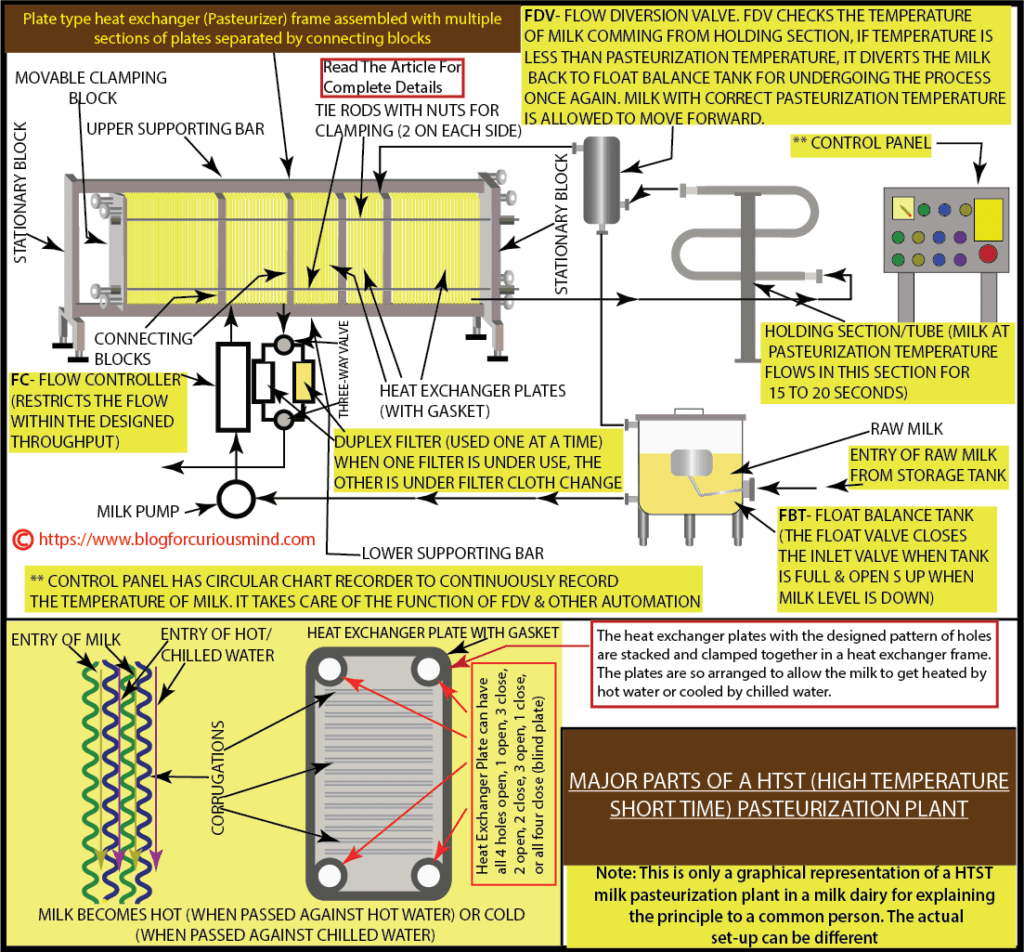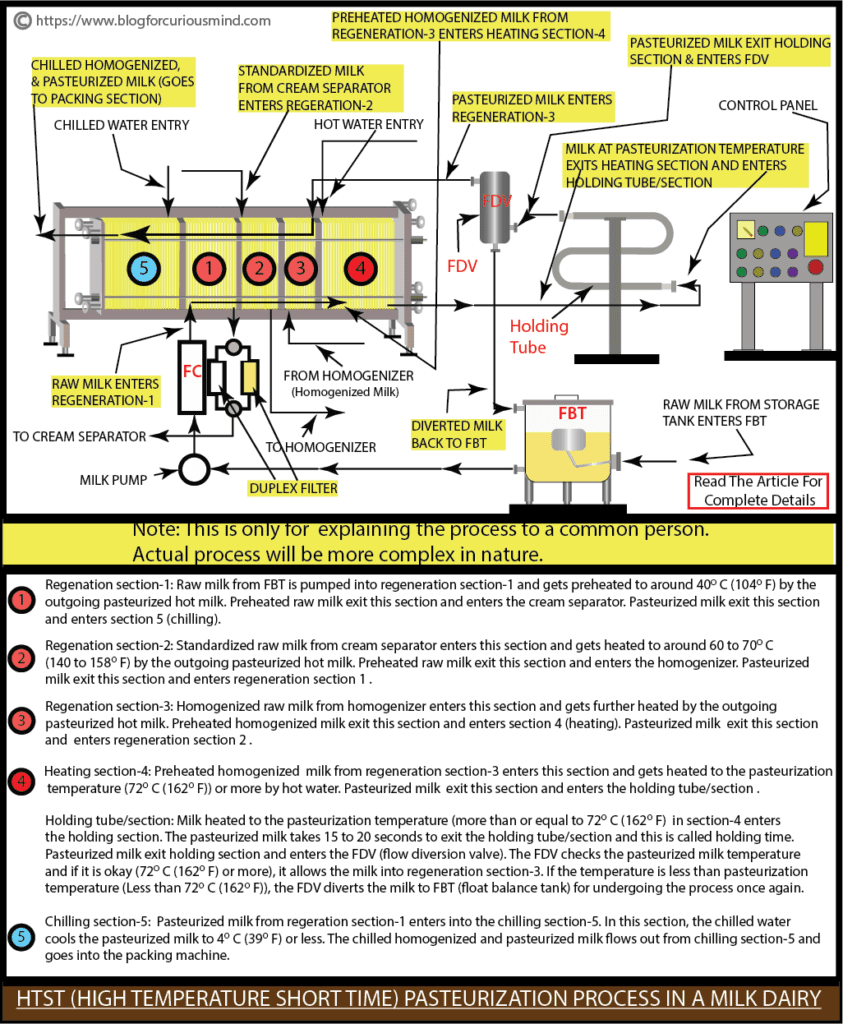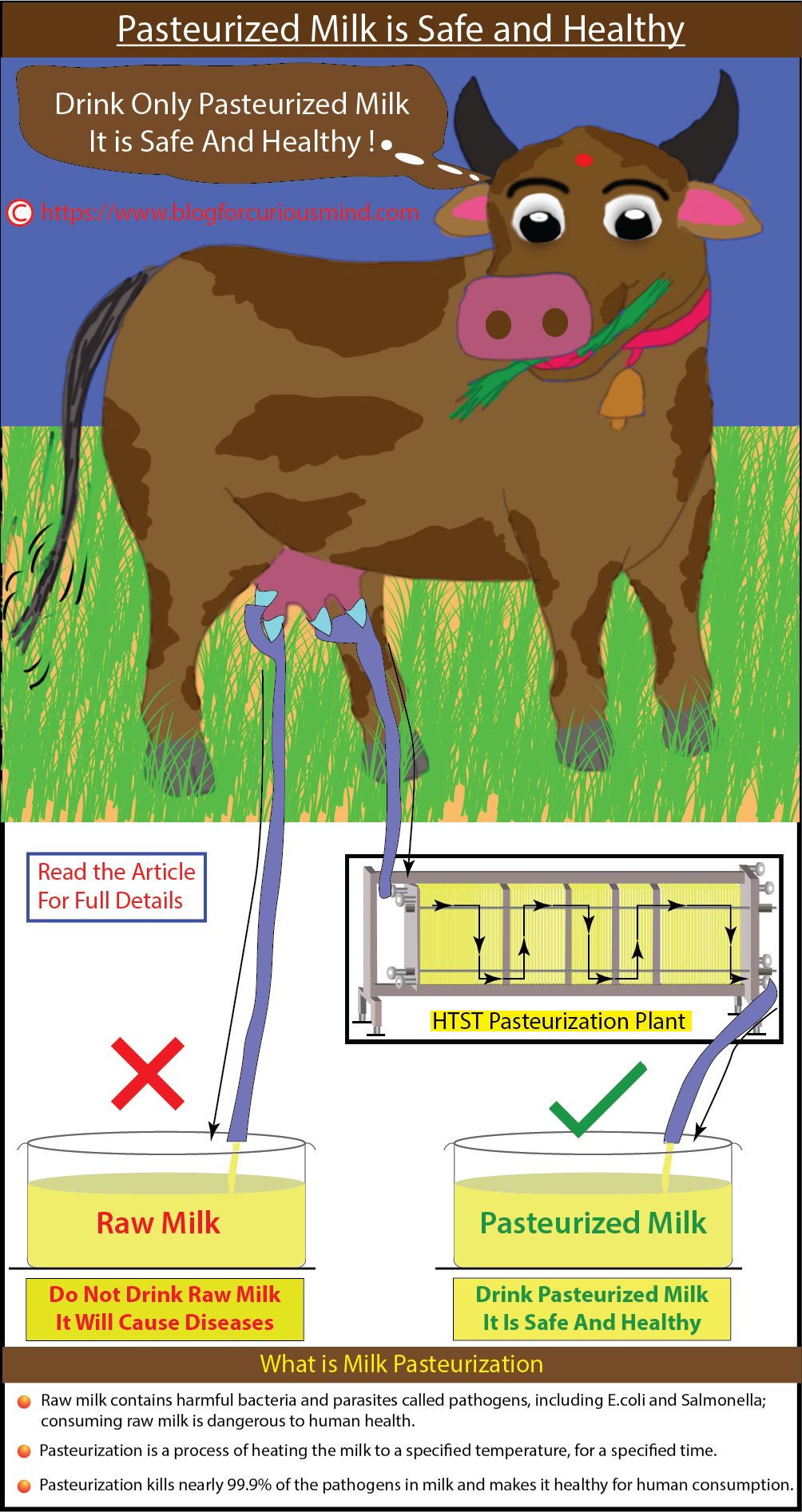Introduction
Pasteurization is a process of heating the milk to a designed temperature for a designed time; it destroys the disease-causing pathogens and makes the milk healthy for human consumption. Pasteurization increases the shelf life of milk.
Do you know who invented the process of pasteurization? Yes, you are correct. Louis Pasteur invented the idea that heating beer and wine kills harmful bacteria and preserves them from souring. This was later adopted for milk. The process of ‘pasteurization’ is named after Louis Pasteur.
Types of milk pasteurization
Raw milk contains harmful pathogens including microorganisms and enzymes, that can cause milk spoilage and harmful diseases in humans. Pasteurization is a process of heating to a specific temperature for a specific time to destroy up to 99.9% of harmful pathogens. Pasteurization makes the milk safe and healthy for human consumption.
When you see the phrase ‘pasteurized milk’ on the label of the milk container, it means the milk has undergone a pasteurization process. Experts believe pasteurization does not significantly affect the nutrients in milk since it does not use any harmful chemicals.
Major types of milk pasteurization are:
- HTST (High-temperature Short-time) pasteurization
- UHT (Ultra High Temperature) pasteurization
- Batch type of pasteurizer or LTH (low-temperature holding) pasteurization
HTST Pasteurization process
HTST is the most used type of milk pasteurization process. Most milk dairies using the HTST milk pasteurization process follow the cycle of heating the milk to 72° C (162° F), holding for 15 seconds at this temperature, and then cooling rapidly to 4° C (39° F) or less. A plate type of heat exchanger is used for heating and cooling milk, hot water is used as the heating media, and chilled water or brine as the cooling media. In the HTST pasteurization process, you can increase the temperature to reduce the holding period, but design calculation is necessary.
The advantages of HTST milk pasteurization are:
- The equipment is compact and a capacity of up to 60000 LPH (Liters per hour) or more is available.
- The regenerative sections used in an HTST pasteurizer make it highly thermally efficient.
- The HTST equipment can be cleaned using the CIP (Clean in place) system.
- HTST is a proven and efficient pasteurization process


UHT pasteurization process
In UHT pasteurization, milk is heated to an ultra-high temperature of 138° C to 154° C (280° F-309° F), holding at this temperature for two seconds, and rapidly cooled to less than 4° C (39° F). The heat exchanger used for UHT can be a plate-type or tubular-type heat exchanger.
UHT pasteurized milk is packed in an aseptic packaging process, in hermetically sealed and sterile containers or tetra packs. In aseptic packing, the packing is independently sterilized before the UHT pasteurized milk is packed in it. These are air-tight sterile packings that have a shelf life of up to six months and do not need refrigeration till it is opened; read the label on the container for actual shelf life and other instructions.
The reason behind the long shelf life of UHT pasteurized milk is UHT kills nearly all harmful bacteria and the six-layer aseptic packing blocks the entry of sunlight, germs, and air into the milk.
Batch type of pasteurizer or LTH (low-temperature holding) pasteurization
In batch-type milk pasteurization, the milk is heated to 63° C (145° F) and held at this temperature for 30 minutes, followed by cooling to less than 4° C (39° F). The process is done in a stainless-steel vat with jackets for passing hot water to heat or chilled water or brine to cool. The modified process may do the cooling in a plate type of heat exchanger. The vat has a stirring arrangement to ensure uniform heating of milk.
This is a non-productive method and is not popular. This process is normally adopted by batch-type cheese manufacturing dairies where the milk is pasteurized in the vat and further processes of cheese manufacturing are continued in the same vat.
You may like to read the article ‘What is Pasteurization of milk? How the milk is Pasteurized?’
You may watch this YouTube video.
Conclusion
Keeping our health in view, we must consume only pasteurized milk. Hope this article was useful to you.
Caution: Persons who have milk allergy must not drink milk. If you are new to milk, talk to your doctor to get the necessary tests done prior to adding milk to your diet. Refrigerate the milk under 4° C (39° F). It is good to heat the refrigerated milk before drinking, particularly for aged people and children.

